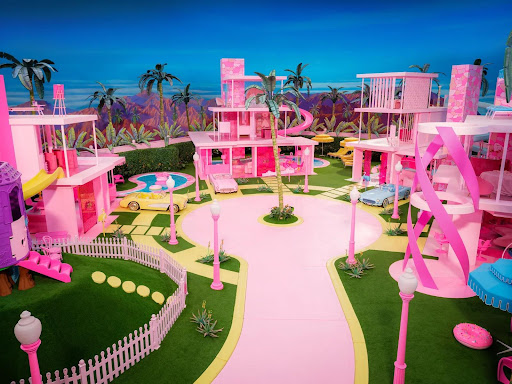
Clients often ask us to create videos inspired by the year’s biggest pop culture sensations. Sometimes they want to parody a scene from a movie or recreate the set of a hit music video. Other times, trending shows and films serve as a reference. Clients want to match the editing style of a new show’s opening montage, or implement the cinematographic techniques of the latest blockbuster. Creating a video that riffs on what’s popular can be tremendously successful and forge synergies between your brand and the larger cultural conversation.
But not all clients have the budget to replicate Hollywood, and sometimes directly copying what’s fashionable isn’t the best way to achieve your video goals. This year, the biggest cultural touchstones were by far Barbie and Oppenheimer, which splashed into the world together as Barbenheimer. In this blog, we’ll examine the filmmaking techniques and craftsmanship that went into their creation, and discuss how to incorporate their methods of filmmaking into your video campaign at any budget.
Whether you are looking to directly reference the source material, selectively adapt filmmaking styles to elevate your video’s message, or subtlety imbue your video with a fresh, modern feel, it all starts with a production partner who truly understands how films achieve their unique identities.
Color Palette
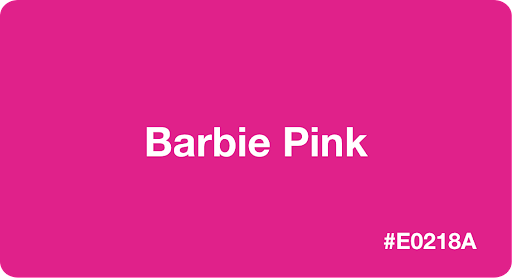
Perhaps the first thing that comes to mind when we think of Barbie is the color pink. Pink outfits, pink houses, and pink cars. And not just any pink, but Barbie Pink (or as computer programs catchily call it: #E0218A). Of course, pink has been the signature color of the Barbie brand since long before the film. A strong color scheme is a defining feature of almost every creative work, whether it’s a movie, show, album cover, or logo. But what works on toys, billboards, and in presentation decks doesn’t always translate to the screen. Careful attention has to be paid to clarity so what’s important doesn’t get lost in the more dynamic world of moving images. And the logistics of sourcing a single color can be trickier than you’d think. Barbie’s production used so much pink paint that it caused a worldwide shortage.
You can easily reference Barbie by using the same pink hue or a similar pink color. But there are less direct ways you can adapt the color of Barbie. One of the key takeaways from Barbie is that audiences react strongly to a strong aesthetic. Everyone and their mother dressed up in pink to attend the film. Consider a similarly bold color scheme for your video. Is there a color people already associate with your brand or company? Create your own world saturated with your primary and secondary brand colors. If you go as bold as Barbie, your audience will understand the reference even if there is no pink in the frame. But you don’t have to reference Barbie directly. Your brand colors can accent the video, creating a sense of cohesion throughout your videos and marketing efforts.
Incorporating a particular color palette might seem simple enough, but there are a number of challenges you won’t be aware of without the expertise of a video production partner. Getting costumes and props made, sourced, or painted to match your brand colors is no small task, especially given the way color changes from what is seen on set to the final rendered image. Different cameras and different color correction techniques give preferential treatment to different hues, shifting their tones. Lighting also has a huge impact on how we perceive color. It’s important to plan the colors of your props and costumes with your color pipeline in mind. Video production experts will know what colors need to be an exact match, and which ones can be tweaked during final color correction.
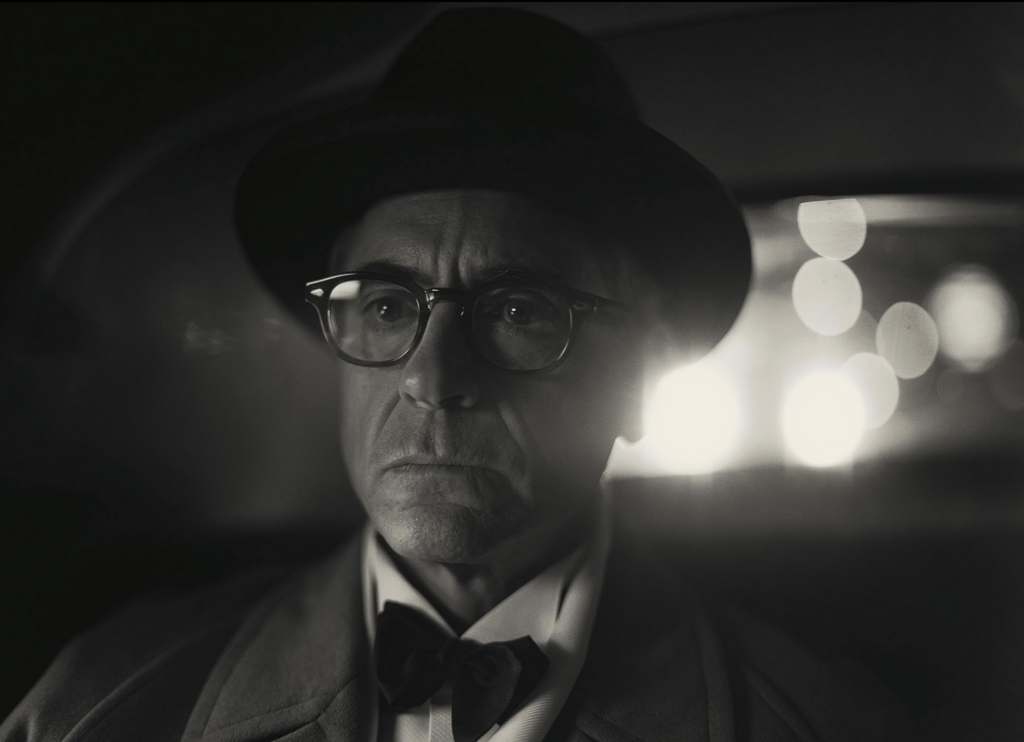
Oppenheimer is better known for its completely colorless sequences, and the bright orange of the Trinity Test in the Los Alamos desert. Black and white cinematography can be a great way to set your video apart, imbuing it with artistic flair. You might also plan a video where everything is black and white except for your brand color, merging the techniques of both Barbie and Oppenheimer. Or, as Oppenheimer does, alternate between color and black-and-white sequences.
It’s easy to default to a generic corporate look, and while that may be the best choice for your video, make sure to consider your options. Contact companies like Indigo Productions to brainstorm ways to elevate your video with a unique color palette.
Set Design
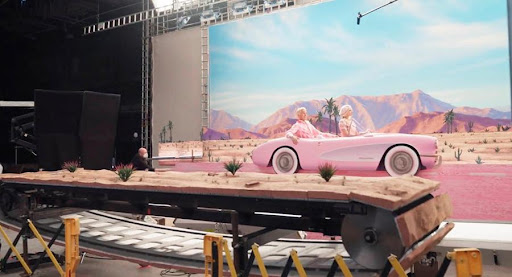
Oppenheimer and Barbie both feature first-rate set design, but they take entirely different approaches to crafting their worlds. Oppenheimer’s set was constructed on location, near where the actual Manhattan Project took place. Conversely, Barbieland was constructed entirely on soundstages. Each approach works great for their respective films. Oppenheimer is a historical epic, so it makes sense to film where the events of the story actually occurred. To shoot anywhere else would be counterfeit, and filming on a soundstage or against a green screen would stand out when contrasted with the natural vistas featured elsewhere. Barbie’s world, however, is entirely artificial. It’s a world of life-sized play sets and talking dolls. This highly stylized universe deserves an unnatural, custom-built set. By constructing this set on a studio lot, the filmmakers were able to exert complete control over their camera and lighting setups – vital to achieving the plastic look they were after.
Consider the goals of your video. Are you selling a fantasy? If so, a custom-built set on a soundstage might be the way to go. Anything you can imagine, you can build. Want to recreate Barbieland, or create your own fictional world named after your product, go for it! Or maybe you want to visualize the imagination of your customer, like we did in this commercial for the gambling app, Sleeper.
Keep in mind, building sets can be expensive. Not only do you have to rent studio space, you have to hire artists to translate your vision into concept art, and then hire artisans to take that concept art and make it into reality, sourcing the materials and finalizing construction. If that sounds intimidating, don’t worry, not everything has to be built from scratch. A great prop master can conjure incredible environments from pre-existing props and products. And remember, a lot can be achieved without artificially enhancing your set with CGI, which increases costs even further. While making Barbie Director Greta Gerwig explained she aimed for “authentic artificiality” at every opportunity, “everything needed to be tactile, because toys are, above all, things you touch.” Barbie production designer Sarah Greenwood and set decorator Katie Spencer brought more than 50 years of nostalgia to life in the film using practical sets and props. When it comes to planning practical sets, it’s important to be practical! Only dress the parts of set that will be seen by the camera. At Indigo Production, we know exactly how much to spend on creating a convincing set that will have all your angles covered.
Wardrobe
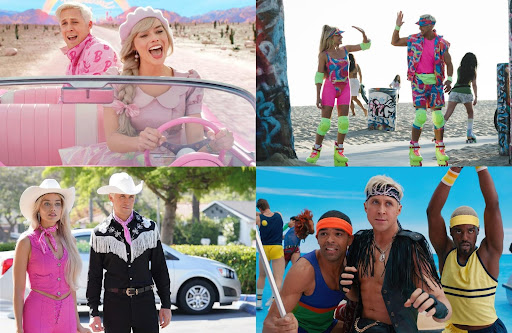
Barbie’s costume designer, Jacqueline Durran, had the unique responsibility of not only outfitting dozens of characters and extras, but also replicating some of Barbie’s iconic outfits from over the years. She also had help from Kim Culmone, the head of design for fashion dolls at Mattel, who dove deep into the archives to provide the filmmaking team with references.
You probably won’t need the services of an Oscar-winning costume designer when developing the wardrobe for your video, and you may not have the mandate to create such outlandish costumes, but a great collaborator with a good eye for fashion will elevate any video. Just like your color scheme, the attire of your on-screen talent should be coordinated, suiting both your brand and the story you are telling. Great wardrobes aren’t always flashy. For example, Oppenheimer’s costume designer, Ellen Mirojnick, created outfits that seamlessly fit into its 1940s and 1950s American setting. When watching the film, you don’t even think of the characters as wearing costumes. But even simple wardrobes require careful planning.
Some outfits and patterns just don’t photograph well. That’s why we’ve put together a cheat sheet for what to wear when on camera. It covers the basics, but there is so much more to creating outfits. Some of our favorite jobs have been those that centered around lavish costume design. For example, this commercial we made for Pet Meds completely relied on the extravagantly gaudy fits we conjured up for owner and dog alike. Whether you have the budget to commission custom-sewn costumes, are planning to do a shopping run, or will just have the talent bring some options of their own, think about your wardrobe goals and how your wardrobe can serve your story or make your video stand out. And if you feel completely lost, that’s okay. Lean on the expertise of a video production partner who will be happy to help you with all your wardrobe needs.
Editing Style
One of the most novel aspects of Oppenheimer is its structure and editing style. The film cross-cuts between multiple time periods and suddenly, almost violently, cuts to abstract, subjective shots of dancing particles and lights – showing viewers how Oppenheimer’s mind visualizes science. Barbie’s editing, on the other hand, is fairly straightforward Hollywood continuity-style editing. While you might expect something zanier given the rest of the film’s formal daring, this familiar editing style smartly grounds the film’s out-there elements. Greta Gerwig looked to classic Hollywood for much of her inspiration, including films like An American in Paris. The way that film edits around motion, especially in its song and dance sequences, can be felt in the kinetic energy of Barbie.
Different rhythms can be found in the edit, but post-production is significantly more seamless when the pace of your video is planned out during the scripting stage. For example, Oppenheimer would not be able to cut between the different periods of his life and flow both in its themes and storytelling if it had not been written that way. Shoot your video like Barbie, it will be difficult to later edit it like Oppenheimer and vice versa.
Remember, editing is the language of film. It’s the syntax and structure of your images. Think about what types of sentences best serve your story. Short and concise or long and contemplative? Ponderous or flowing? And think about the point of view of your video. Is there a character, like Oppenheimer, whose mind the viewer is occupying? Or are you taking an objective third-person view? By looking at the biggest films of the year, you’ll gain a sense of what kinds of edit pacing in style. Certain editing techniques feel cinematic, while others are right at home on social media. Unless a film has a very startling editing technique, your edit probably won’t remind the audience of the film you are taking inspiration from. So feel free to cast a wide net, and take cues from films that really suit the style of your video.
It’s not always easy to discern what goes into an edit. After all, editing is designed to be invisible. When watching a film, you might not be able to tell what is drawing you in, but an expert editing team will be wise to the techniques on display, spotting and hearing the ways the images and sounds were put together.
Iconic Sequences
One of the most iconic moments in Barbie is when Ryan Gosling’s Ken breaks out into the song, “I’m Just Ken.” This extended song, dance, and fight sequence has already been the subject of numerous parodies, including on Saturday Night Live where host Pete Davidson launched into his own anthem, “I’m Just Pete.” The parody used visual effects and set and costume design to recreate the world of Barbie almost one-to-one. In the years to come, there will surely be commercials and videos from other brands that perfectly imitate this moment and others from the film to great effect. But facsimile isn’t the only way to channel iconic moments.
Consider Oppenheimer’s most iconic scene, the Trinity Test, itself a recreation of one of history’s most defining moments, the first atomic bomb test which was already rendered iconic by the cameras of the era. Instead of directly matching the existing footage, Director Christopher Nolan uses his film’s soundscape to communicate the power of the bomb. The film’s ever present soundtrack drops out and everything goes silent. This unnaturally long period of quiet builds and builds and builds until the shock of the explosion’s boom memorably shakes the theater’s seats.
Interestingly, it’s these two acoustically charged moments that left the biggest impression on viewers. Think of some other iconic moments from films. Chances are something about the sound design or the score comes to mind. When you think of Star Wars, do you see spaceships and lightsabers or hear them along with John Williams’s soundtrack first? Odds are the soundtrack pops into your head faster than you would have guessed!
Rather than directly copying these iconic moments from Barbie and Oppenheimer, you might consider taking their lessons regarding sound and applying them to your video. Does it make sense for one of your characters to break out into song, or to compose a catchy anthem about your product or target demographic? (What would the Barbie or Ken of your customer base look like?) Would a sudden eruption of sound from silence elevate your video? Perhaps the start-up noise of your custom technology startles the world out of a slumber? Or is there another way you can use sound to create a memorable impression?
When it comes to iconic moments, every little detail matters. This is especially true for sound. If it isn’t mixed just right, or if a subpar sound sample is used, your otherwise impactful moment can fall flat. That’s why it’s worthwhile to have an experienced editor or sound engineer take a final pass on your video. They’ll be able to listen to the audio on multiple devices and speaker setups, ensuring it sounds great no matter where the video is viewed.
Next time you notice an iconic moment in a film, think about the elements that went into making that moment memorable, and how you might use one of those elements in your videos.
Distribution

If there’s one thing that everyone making a video wants to replicate from Barbie and Oppenheimer, it’s their success. The two films launched to rave reviews and immense cultural impact. A driving factor was their simultaneous release, and the way their tones and subject matters completely contrasted, fueling social media memes and discussion. Barbie also catered primarily to women while Christopher Nolan’s loyal fanbase is primarily male. These two demographics came together for double features, lending both films four-quadrant appeal.
When releasing your video, think about what synergies can be created with other world or media events. Is there a way to create a mutual boost in mindshare? Even if the increase in engagement is small, every little bit of extra attention makes a difference in today’s oversaturated content landscape. But don’t force it! Paramount tried to create a similar phenomenon with #SawPatrol, commemorating the release of the ultraviolet horror film Saw X and the animated children’s film Paw Patrol. This did not catch on, and for good reason… no kids seeing Paw Patrol will be doing a double feature with Saw.
If there is no clear synergy with other pieces of media, look to social media trends. Does a popular hashtag apply to your video? And if not, can you make a small modification to the video to help it trend? Just don’t forget, today’s trends are gone tomorrow, and on the internet sometimes even by the evening! So if you are going to adjust your video, do it quickly, or pick a trend you feel has staying power. Indigo Production has a team of SEO experts, ready to help identify what sends a video to the top and help you get there.